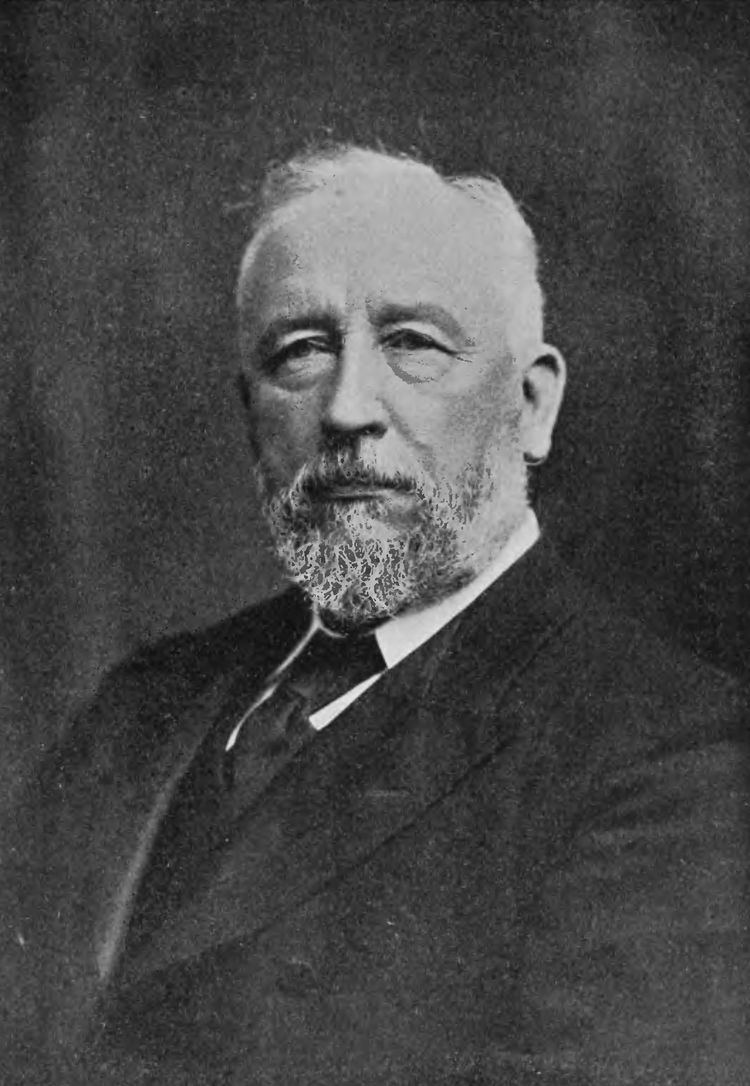Nationality Scottish Name David Gill | Title FRSLL.D.CBKCB Occupation Astronomer | |
 | ||
Died January 24, 1914, London, United Kingdom Books Six Months in Ascension: An Unscientific Account of a Scientific Expedition Awards | ||
Sir David Gill (12 June 1843 – 24 January 1914) was a Scottish astronomer who is known for measuring astronomical distances, for astrophotography, and for geodesy. He spent much of his career in South Africa.
Contents
Life and work
David Gill was born at 48 Skene Terrace in Aberdeen the son of David Gill, watchmaker and his wife Margaret Mitchell. He was educated first at Bellevue Academy in Aberdeen then at Dollar Academy. He spent two years at Aberdeen University, where he was taught by James Clerk Maxwell, and then joined his father's clock-making business. It would seem that Gill's interests lay elsewhere since after a few years he sold the business, and then spent time equipping Lord Lindsay's private observatory at Dun Echt, Aberdeenshire. In 1874, Gill joined the expedition to Mauritius to observe the transit of Venus. Three years later he went to Ascension Island to observe a near approach of Mars and to calculate its distance. While carrying out these laborious calculations, he was notified of his appointment to the Cape Observatory, which, over the following 27 years he was to refurbish completely, turning it into a first-rate institution. Gill was a meticulous observer and had a flair for getting the best out of his instruments. His solar parallax observations with a heliometer and his calculations of distances to the nearer stars, are testimony to his outstanding work. He recruited Robert Innes to the Cape Observatory.
Gill used the parallax of Mars to determine the distance to the Sun, and also measured distances to the stars. He perfected the use of the heliometer. He was Her Majesty's Astronomer at the Cape of Good Hope from 1879 to 1906. He was a pioneer in the use of astrophotography, making the first photograph of the Great Comet of 1882, and one of the early proponents of the Carte du Ciel project.
The invention of dry plate photography by Richard Leach Maddox made Gill realise that the process could be used to create images of the stars and to more easily determine their relative positions and brightness. This led to a massive project in collaboration with the Dutch astronomer J.C. Kapteyn, and the compiling of an index of brightness and position for some half a million southern stars. The work was published as Cape Photographic Durchmusterung in 3 volumes between 1896 and 1900. Gill also played a leading role in the organising of the Carte du Ciel, an ambitious international venture aimed at mapping the entire sky. He initiated the idea of a geodetic survey along the 30th east meridian stretching from South Africa to Norway, resulting in the longest meridian yet measured on Earth.
Gill married Isobel Black in 1870, and she accompanied him to Ascension Island for his Mars observations. On Gill's retirement in 1906, the couple moved to London, where Gill served for two years (1909–1911) as president of the Royal Astronomical Society before his death in 1914. He was buried in the grounds of St Machar's Cathedral, Aberdeen.
Selected writings
His writings include:
Honours
Lectures
In 1909 he was invited to deliver the Royal Institution Christmas Lecture on Astronomy, Old and New.
